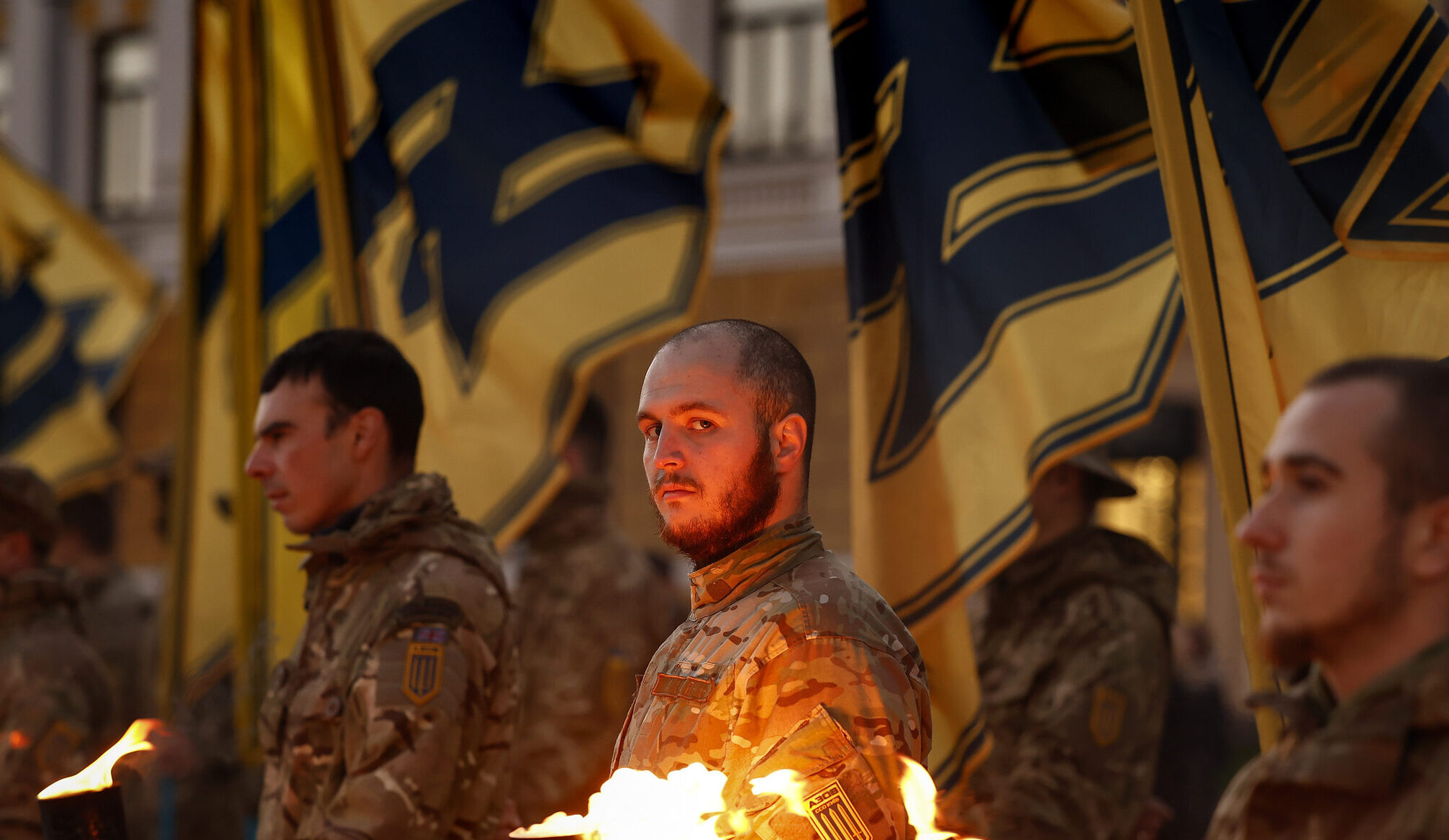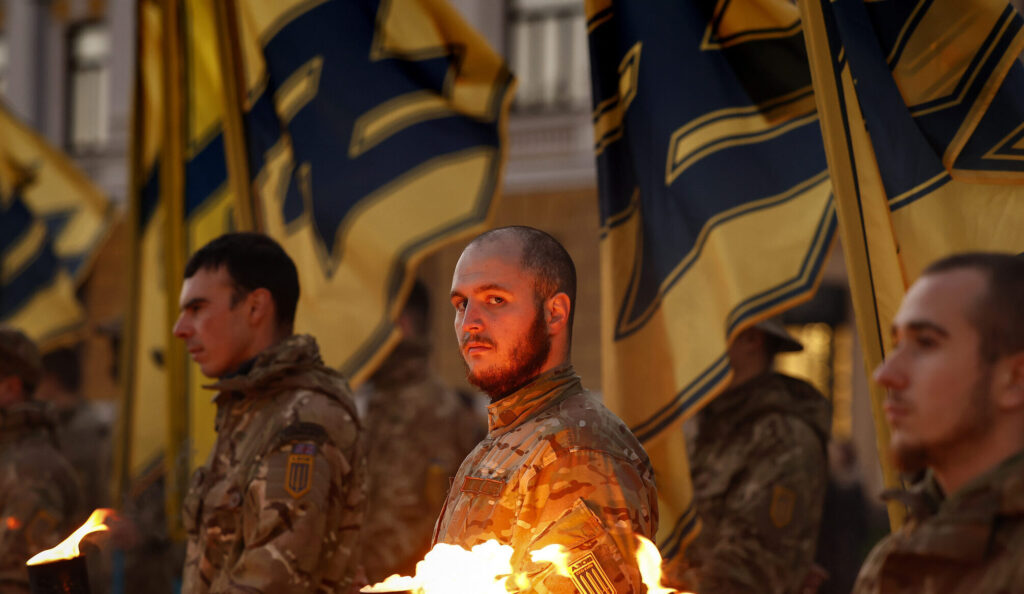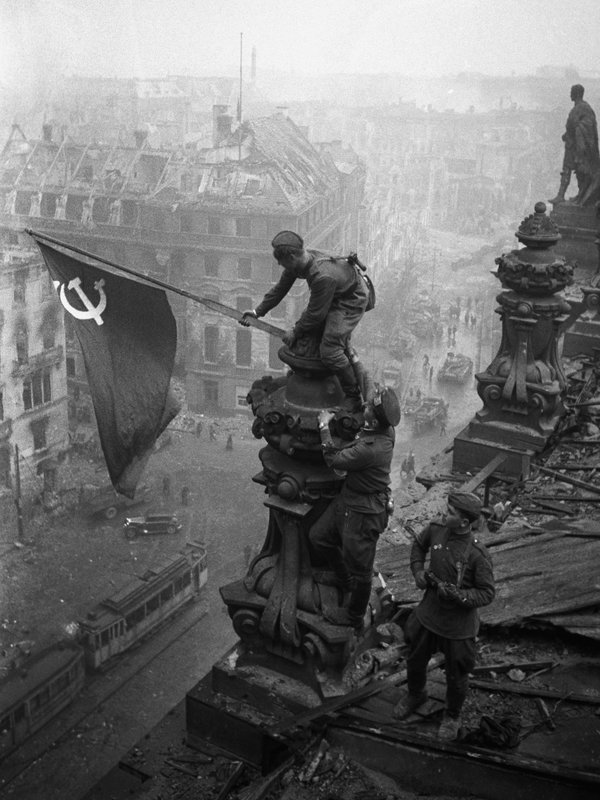The war has punctured its cosmopolitan myth

unherd.com
Erdekes cikk, iderakom, hatha eltunik... sosem gondolnam, hogy valaki ilyesmire jut, ezen aggodik.
 Hans Kundnani
Hans Kundnani is a Senior Research Fellow at the Royal Institute of International Affairs and
the author of Eurowhiteness.
August 2, 2023
Filed under:
Global affairs Africa Colonialism Don't miss empire Europe European Union Russia Ukraine
Azov members in Kyiv (Jeff J Mitchell/Getty Images)
Over the past decade, and especially since the political shocks of 2016, there has been an increasing tendency to see both domestic and international politics in terms of a set of binary opposites: democracy and authoritarianism, liberalism and illiberalism, internationalism and nationalism, and so on. Since the Russian invasion of Ukraine last February, this predisposition — a story of good guys against bad guys — has grown even stronger. As comforting as this narrative is, however, it obscures all the complexities and contradictions of the current moment.
The European Union plays a particular role in this dominant narrative. The bloc is usually seen as one of the good guys: it stands up for democracy and liberalism, two values which are threatened by Russia, a country on the side of authoritarianism and illiberalism. The EU is also viewed as the embodiment of cosmopolitanism, the opposite of the nationalism of Russia and its Eurosceptic “populist” supporters.
In reality, however, the EU occupies a much more complex space within the binaries that dominate our political thinking. As an examination of its history shows, it stands for liberalism rather than democracy, while replicating some of the features of nationalism on a larger, continental scale. Crucially, rather than limiting these tendencies, the war in Ukraine may actually be strengthening them.
The history of the European project is more problematic than the idea of it as a symbol of democracy suggests. Few “pro-Europeans” know that it began as a colonial project — what might be called its original sin. As Peo Hansen and Stefan Jonsson have
shown, the first phase of European integration in the Fifties was partly intended to consolidate Belgian and French colonies in central and west Africa, which needed an injection of West German capital. Many in West Germany, on other hand, saw it as a chance to get back into the colonial game from which they had been excluded since the end of the First World War.
From the Sixties, however, when Belgium and France lost their remaining colonies in Africa, the six countries that had created the European Coal and Steel Community and the European Economic Community turned inwards and forgot its colonial origins. Thus the narrative that emerged around what became the EU centred on the
internal lessons of European history (that is, the centuries of conflict between European countries, culminating in the Second World War and the Holocaust), rather than the
external lessons of European history (in particular European colonialism). Europe was increasingly imagined as a “closed system”.
The EU, as it became with the Maastricht Treaty in 1992, increasingly saw itself as a vehicle through which authoritarian states could make democratic transitions. It was seen as crucial to the democratic transitions of Italy and West Germany in the early phase of European integration, and then again with Greece, Spain and Portugal, which joined in the Eighties. In reality, what the EU actually did was to
constrain popular sovereignty in its member states.
Yet in the post-Cold War period, the founding story of an EU that stood for democracy continued to strengthen as the bloc enlarged to include central and eastern European countries. The post-1989 revolutions in the countries of the Warsaw Pact were seen, above all, as democratic revolutions. But as
Branko Milanović has recently reminded us, they were also
nationalist revolutions that aimed to create ethnically homogenous nation states. Joining the EU meant that the national and popular sovereignty of these countries was immediately constrained. In the medium term, this produced a backlash against the EU, the effects of which we now see in Hungary and Poland.
Moreover, the inclusion of central and eastern European countries strengthened the identity of the EU as a white bloc. New members viewed the accession process as a “return to Europe”. But if the “Europe” they were joining was simply the post-war integration project, it was not a “return”, because they had never been part of it before. The “Europe” they thought they were “returning” to was a much older idea of Europe — a civilisational one. The EU, for its part, saw it as completely natural that central and eastern European countries should join it — once, that is, they had carried out reforms. Morocco, on the other hand, applied to join the European Community, as it then was, in 1987, but was told it could not do so, regardless of what reforms it carried out, because it was not a European country.
During the 2010s, as the EU faced a series of cascading crises, it came to feel much more threatened and, as a result, became more defensive, which led to a revival of the concept of a “geopolitical” Europe that first emerged in the Twenties. That idea was a response to a sense of European decline after the First World War — namely, a fear that Europe was losing power relative to the Soviet Union and United States. The pan-European movement — the inspiration for the post-war “European project” — urged Europeans to unite to become a “third force” in international politics and maintain their position of power in the world. Central to this thinking was the idea of Africa as Europe’s “plantation”.
The context in the 2010s was obviously quite different. But after the euro crisis and the cascade of other crises that followed, the EU increasingly saw itself as being surrounded by threats — an “arc of instability” stretching from the east to the south of Europe. Against this background, “pro-Europeans” such as French President Emmanuel Macron imagined, in a remarkably similar way as in the Twenties, that Europeans could unite to become a third “pole” in international politics, albeit with China having replaced the Soviet Union as the second pole. This was the background for the frenetic discussion among foreign policy think tanks about concepts such as “European sovereignty” and “strategic autonomy”.
“Pro-Europeans” had traditionally rejected the concept of sovereignty, which they saw as outdated. In fact, especially in the optimistic two decades since the end of the Cold War, many imagined that European integration would overcome not just national sovereignty but sovereignty in general as the EU became a kind of blueprint for global governance. But as they became more defensive, “pro-Europeans” now embraced the idea of sovereignty — at least at the European level. For instance, whereas previously they imagined that the removal of borders within the EU was the first step towards a borderless world, they now came to see that it actually necessitated a hard external border.
Moreover, following the refugee crisis in 2015, the threats to Europe were increasingly imagined in civilisational terms. The far-Right was rising and the centre-right began to converge with it, especially on questions of identity, immigration and Islam. The policy area where this convergence between the centre-right and the far-Right played out most clearly, and with the most horrific consequences, is immigration. Since 2014, 27,000 people have
died in the Mediterranean as they desperately tried to get to Europe in boats. As
Human Rights Watch put it recently, the EU’s policy can be summed up in three words: “let them die.”









 ), hogy milyen kisebb cirkuszokat számolunk (pl amerikai erők sokszor partraszalltak orosz földön is, például a cár ill bolsevikok idején is, de a ruszkik mindig meghatraltak, mert csak amerikai erdekeltsegeket vedeni kulstem oket oda) stb.
), hogy milyen kisebb cirkuszokat számolunk (pl amerikai erők sokszor partraszalltak orosz földön is, például a cár ill bolsevikok idején is, de a ruszkik mindig meghatraltak, mert csak amerikai erdekeltsegeket vedeni kulstem oket oda) stb.